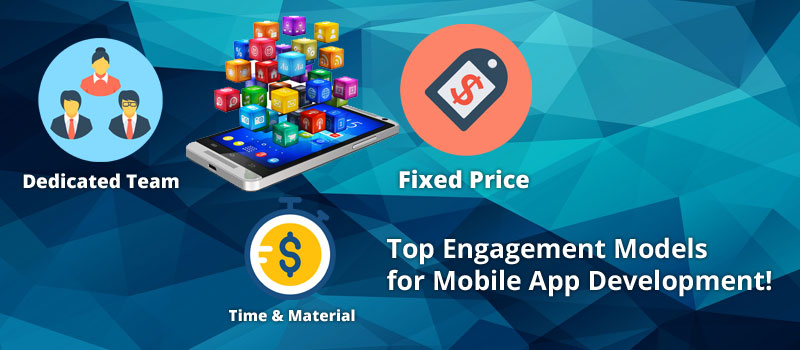How to Choose the Right Engagement Model for Mobile App Development?
Back in the 1990’s when the outsourcing model first emerged; it had to fight for acceptance. Two decades down the line, the IT outsourcing industry has grown tremendously with over 50% of businesses outsourcing their IT functions. So, what’s behind this staggering growth? It’s simple: outsourcing promises a ton of benefits that are otherwise unattainable. From cutting down costs to accelerating time to market, the list of benefits is seemingly endless.
When it comes to outsourcing mobile apps development, it’s no different. You can deploy a viable product in minimal time, at reduced costs and with zero investment in infrastructure. However, selecting the right engagement model is the biggest challenge.
Let’s take a look at the available models and how you can choose the appropriate one:
Fixed Cost Model
You need to set clear objectives, define the scope and the mobile app development requirements. A price is fixed accordingly.
Pros:
• It’s a low-risk option
• It’s pre-negotiated
• Ensures timely delivery
• Structured workflow
Cons:
• Limited flexibility
• Changes down the line will cost more
• Communication is limited
Time and Material
In this model, the pricing is as per the execution time and the resources utilized. So, you only pay in proportion to what you get.
Pros:
• Open communication
• Completely flexible
• Can alter the scope any time
• Prioritize tasks as per your needs
• Complete access to reports
Cons:
• There is no predefined price. Fluctuations are dependent on the time invested.
Dedicated Hiring Model
Under this model, you get to outsource the technical part of the development process to external dedicated developers and have them work exclusively for you while keeping critical tasks such as project management in-house.
Pros:
• No need to buy infrastructure, office space, etc
• Service provider takes care of hiring and managing resources
• Complete control over development
• Quicker time to market since resources work dedicatedly
• Flexibility on assignment of tasks
• Lowers costs of development
Cons:
• Communicating with remote teams might be a hassle
• Requires managerial experience to direct the project
What’s best for you?
Identifying and selecting the right engagement scheme is relative to business-specific requirements:
At Openwave, we provide distinct engagement models to meet the demands of our diversified client base. If you’re looking to hire application developers in New York, then reach out to us today.


no responses.